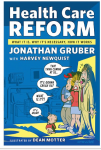Founded in 1966 by Billy Klüver, Fred Waldhauer, Robert Rauschenberg and Robert Whitman, Experiments in Art and Technology (E.A.T.) was a non-profit group that fostered collaboration between artists and engineers. Active between the 1960s and 1980s, E.A.T. recruited scientists and engineers to work with artists looking to incorporate new technologies into artworks, performances, and installations. The organization also pioneered educational and public service projects that exposed the general public to telecommunications technology and expanded media access in countries across the globe.
This episode of the Oxford Comment is the second in our two-part series in conjunction with the Benezit Dictionary of Artists. We resume our roundtable conversation at the New York office with artist Robert Whitman, Benezit Editor in Chief, Dr. Kathy Battista, and Experiments in Art and Technology Director Julie Martin, to discuss many of E.A.T.’s noteworthy and laudable undertakings. To learn more, our multimedia producer, Sara Levine, also interviews Dr. Julia Robinson, a Grove Dictionary of Art contributor and professor of Art History at New York University, about E.A.T.’s role in the development of the performance art medium in New York in the 1960s and 1970s.
Featured image credit: Billy Klüver talking about E.A.T. and 9 Evenings to a group of artists and engineers in Toronto. Artists’ requests to the engineers for their 9 Evenings performances are projected on the wall behind him. Photographer Unknown. All rights reserved. Image reproduced with permission from Julie Martin and E.A.T.
The post Experiments in Art and Technology – Episode 37 – The Oxford Comment appeared first on OUPblog.

Founded in 1966 by Billy Klüver, Fred Waldhauer, Robert Rauschenberg and Robert Whitman, Experiments in Art and Technology (E.A.T.) was a non-profit group that fostered collaboration between artists and engineers. Active between the 1960s and 1980s, E.A.T. recruited scientists and engineers to work with artists looking to incorporate new technologies into artworks, performances, and installations. The organization also pioneered educational and public service projects that exposed the general public to telecommunications technology and expanded media access in countries across the globe.
This episode of the Oxford Comment is the second in our two-part series in conjunction with the Benezit Dictionary of Artists. We resume our roundtable conversation at the New York office with artist Robert Whitman, Benezit Editor in Chief, Dr. Kathy Battista, and Experiments in Art and Technology Director Julie Martin, to discuss many of E.A.T.’s noteworthy and laudable undertakings. To learn more, our multimedia producer, Sara Levine, also interviews Dr. Julia Robinson, a Grove Dictionary of Art contributor and professor of Art History at New York University, about E.A.T.’s role in the development of the performance art medium in New York in the 1960s and 1970s.
Featured image credit: Billy Klüver talking about E.A.T. and 9 Evenings to a group of artists and engineers in Toronto. Artists’ requests to the engineers for their 9 Evenings performances are projected on the wall behind him. Photographer Unknown. All rights reserved. Image reproduced with permission from Julie Martin and E.A.T.
The post Experiments in Art and Technology – Episode 37 – The Oxford Comment appeared first on OUPblog.

 A graphic novel has become Exhibit A in the latest Obamacare controversy.
A graphic novel has become Exhibit A in the latest Obamacare controversy.
Clear, simple, understandable, useful – those are just a few of the words that recurred in reviews of Health Care Reform: What It Is, Why It’s Necessary, How It Works, a 2012 graphic novel by Xeric-winner Nathan Schreiber and MIT’s Jonathan Gruber.
The irony of these descriptions is no doubt evident to anyone who has been following political news over the past weeks — years after Gruber won praise for his adeptness in making the proposed health law easy to grasp, Gruber has become the center of a political storm due to his recent off-the-cuff claim that the language of Affordable Care Act was deliberately misleading and designed to take advantage of Americans’ “stupidity.”
The dust-up has given new life to the Gruber and Schreiber graphic novel, which thanks to the vagaries of Amazon pricing algorithms appears to become an expensive collectible in hardcover. Conservative sites are finding the book funny in unintended ways, although no one has yet to explain the replacement of its originally announced artist, Dean Motter. It’s natural to assume that there may have been issues of scheduling or style, but perhaps there just wasn’t a place for health care in Terminal City.




Meanwhile, over on Salon, an article accuses the Republican Supreme Court Obamacare challenge of retconning the Affordable Care Act: http://www.salon.com/2014/11/19/gops_absurd_comic_book_scheme_how_theyre_trying_to_retcon_obamacare/
Conquering pop culture sure does have its drawbacks.